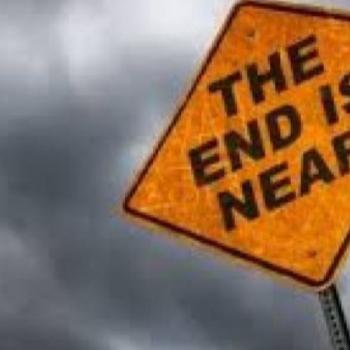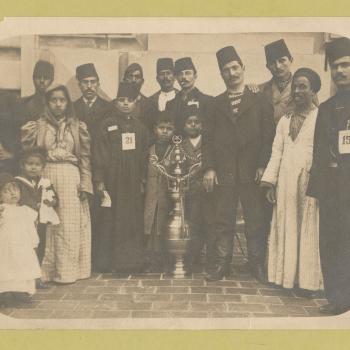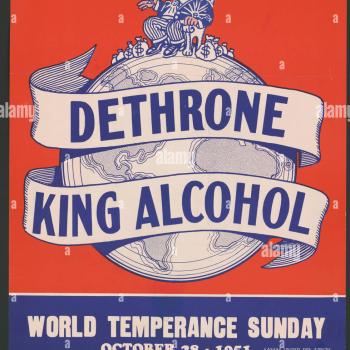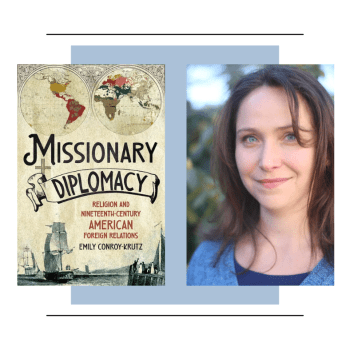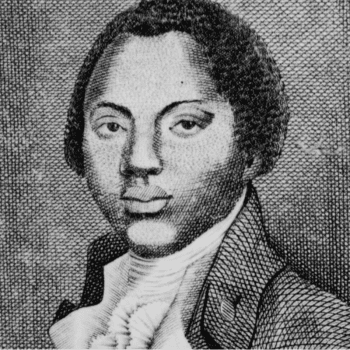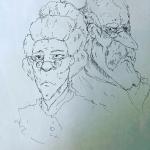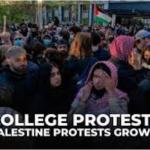Today we’re pleased to announce that Melissa Borja is joining The Anxious Bench, after having contributed two guest posts last month. An assistant professor of American culture at the University of Michigan, Melissa holds a doctorate from Columbia University and specializes in Asian American studies, religion, and migration. Her first official post will go up July 26, but Melissa was kind enough to answer a few of my questions for this introductory interview.
In your two guest posts earlier this summer, you wrote about the intersection of migration and religion. What initially drew you to this field?
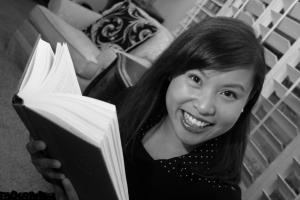 My fascination with the immigrant experience began with my own upbringing. My mother and father immigrated from the Philippines in 1976 and 1980, and I was born and raised in Saginaw, Michigan. Growing up as Asian American kid in Michigan in the 1980s was a complicated experience. The same year I was born, a Chinese American man named Vincent Chin was murdered in Detroit by white autoworkers. The repercussions of that event had an important impact on the Asian American community, which organized a powerful response to seek justice. It also had an enormous impact on how Asian American families like my own navigated the racial politics in our own communities, where the auto industry was a core part of the local economy and where anti-Asian hostility was on the rise as American auto-makers faced stiffer competition from Asian auto manufacturers. So, throughout my childhood, I was grappling with some of the typical questions that immigrant kids face—questions about how to negotiate being both American and Filipino—and, in addition to that, I was also trying to make sense of the reality of racism. In particular, it became clear to me from a young age that racism needed to be explored and understood beyond the black-white binary.
My fascination with the immigrant experience began with my own upbringing. My mother and father immigrated from the Philippines in 1976 and 1980, and I was born and raised in Saginaw, Michigan. Growing up as Asian American kid in Michigan in the 1980s was a complicated experience. The same year I was born, a Chinese American man named Vincent Chin was murdered in Detroit by white autoworkers. The repercussions of that event had an important impact on the Asian American community, which organized a powerful response to seek justice. It also had an enormous impact on how Asian American families like my own navigated the racial politics in our own communities, where the auto industry was a core part of the local economy and where anti-Asian hostility was on the rise as American auto-makers faced stiffer competition from Asian auto manufacturers. So, throughout my childhood, I was grappling with some of the typical questions that immigrant kids face—questions about how to negotiate being both American and Filipino—and, in addition to that, I was also trying to make sense of the reality of racism. In particular, it became clear to me from a young age that racism needed to be explored and understood beyond the black-white binary.
Like many female historians of my generation, I also owe my career path partly to the American Girl books! I absolutely loved reading the Kirsten books, which explored the experience of 19th century Swedish immigrants. Since Kirsten was also an immigrant girl in the Midwest, I felt an instant connection with her, and I even used to try to braid my hair like hers in fourth grade. But while the books encouraged me to think about immigration with a historical perspective, they also frustrated me because I knew that other histories (of Asian immigrants in particular) were not part of the Europe-centered narrative that the Kirsten books and my school textbooks emphasized. So, I thank Kirsten for pointing me in the direction of studying history, and especially Asian American history.
I later became interested in religion in college. The terrorist attacks of September 11 occurred just as I was moving into my sophomore dorm room. At the beginning of college, I knew I was going to concentrate in history, but because of 9/11, I began thinking about religion as another fascinating and important form of social difference. A week after 9/11, I enrolled in my first religion course—a course on personal choice and global transformation, where I heard a compelling talk by the great religious historian David Hall about how scholarship about the past can be a meaningful way to intervene in the present. Later, as I grew concerned about the anti-Muslim and anti-Arab sentiment that erupted in the aftermath of 9/11, I took courses about religious pluralism with Diana Eck, and I also began to study Arabic, with the intention of eventually going to graduate school to research the religious diversity of post-1965 immigrants.
In case readers want to learn more about the history of immigration, could you recommend a couple of books, digital projects, documentaries, or other resources that would make for good starting points?
My research focus is on refugee migrations, so let me begin there. I always teach Viet Thanh Nguyen’s The Sympathizer, which won the Pulitzer Prize for fiction. It is an absorbing and truly insightful novel, and one that illuminates so many important aspects of war, refugee migration and resettlement, and racism. As for film, God Grew Tired of Us is a terrific documentary that offers a valuable overview of the challenges that refugees face at all stages of their forced migration, from war, to life in a refugee camp, to resettlement in a third country.
As for the issue of understanding undocumented immigration in the U.S., Mae Ngai’s Impossible Subjects offers an excellent exploration of how the problem of illegal immigration is the direct consequent of restrictive immigration laws. (Full disclosure: Mae was my dissertation advisor.) I like to pair Impossible Subjects with stories that illuminate the human experience of undocumented migration. To teach about Dreamers, I like the documentary Papers: Stories of Undocumented Youth. Rachel Aviv’s article, “The Cost of Caring,” in The New Yorker is another article I like to teach, as it features undocumented women who work as nannies and caregivers. I pair it with the short New York Times Op-Doc “The
It’s also a very timely field, given the debates in the U.S. and other countries surrounding immigration and asylum. What’s challenging and rewarding about being a historian of a topic that’s so regularly in the news?
More than ever, I find that my research, teaching, and writing are useful, even urgently so. It’s clear that Americans need a more nuanced, historically informed understanding of immigration and refugee migrations. And it’s also clear that Americans are hungering to understand these issues more deeply and sensitively. Throughout the past couple years, I’ve found that, due to my own interest but primarily that of others, I’m out in the community more—teaching about immigration in churches and community centers, writing shorter essays for a broader audience, and getting involved with grassroots immigrant advocacy work. That’s been a wonderful growing experience for me. I feel that my work is more morally meaningful than ever, and being a more engaged scholar has helped me become a better researcher, writer, and teacher, too.
At the same time, it’s certainly been a challenge. While there’s a desire for expertise in America today, there’s also been a suspicion and rejection of it, and at times a manipulation of scholarly work for political purposes. I’m also aware that being knowledgeable about a topic doesn’t necessarily mean that people will listen to you. It’s extremely important, I’ve discovered, to prioritize building relationships. Only in the context of trust will people be willing to listen and engage with you. For this reason, I’m really trying to prioritize humility and compassion and building relationship and trust in all of the work that I’m doing.
What’s your current research/writing project?
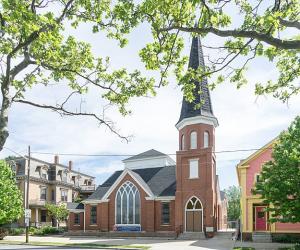
I’m in the process of finishing my first book, which is about how refugee policy shaped the religious lives of Hmong refugees who resettled in the U.S. in the 1970s and 1980s. I argue that refugee resettlement changed Hmong religious life in two ways. On one level, American refugee policies disrupted the practice of indigenous Hmong religion. At the same time, in the American system of refugee resettlement, federal and local governments relied on religious agencies and churches to provide essential resettlement services. These public-private, church-state administrative arrangements initiated close and influential relationships between animist Hmong refugees and Christian resettlement workers. In these two ways, the American refugee resettlement program helped to introduce new religious alternatives to Hmong refugees at the same time that they rendered traditional religious options unviable. Refugee resettlement produced these pressures for religious change despite sincere efforts on the part of governments and voluntary agencies to make refugee assistance a pluralistic and religiously neutral enterprise.
Based on extensive archival research and multi-lingual oral history interviews, this book connects multiple subfields— immigration history, religious history, political history, and Asian American history—and makes several interventions. First, it explores the history and significance of religious organizations doing public work in the U.S. Second, this book offers one of the first investigations into the religious repercussions of this entanglement of church and state, and in particular, the consequences that it brought for religious minorities. Third, this book is the first historical study of Hmong American animism and is among the first investigations into how Asian ethnic groups addressed problems of incommensurability and illegibility by preserving, transforming, and translating indigenous spiritual beliefs and practices as “religion” in the U.S. Finally, this book is among the first histories of refugee resettlement narrated from multiple geographic, social, and institutional sites and one of the few studies to pair a history of national resettlement policy with a close study of its local impact on Hmong individuals, families, and communities.
When I finish with this book, I look forward to working on a second project about religious diversity in the U.S. military. As a scholar of religious pluralism, I’m intrigued by how public institutions accommodate and manage religious difference, especially in the military, where being “in uniform” requires some degree of flattening out of difference at the same time that it needs to respect and honors individual freedoms. There’s been some excellent work on religion in the military recently, especially about the chaplaincy and the politics of religious diversity during the Cold War era. I hope to build on this by calling attention to religious groups that fall outside the Judeo-Christian category—in particular, Muslims, Hindus, Sikhs, Buddhists, and animists—and paying special attention to how religious difference is handled in the practical choices of daily life, in matters such as clothing, food, and medical care. I’m very excited about this new project, in part because it unites my interest in religion and Asian Americans, but also because of my own life. My brother and my husband are both military officers, and I find the daily lives of military families to be truly fascinating.
Earlier this summer, a few of us shared some historic destinations in Europe that we especially like to visit, after having done the same last year with the U.S. Do you have any advice for historical travel?
As a scholar of Asian diasporic communities, I recommend that travelers—whether in Europe or Africa or Latin America—look closely at the streetscape and pay attention to how Asian migration is changing how people eat, worship, do business, and go about daily life. When I was in Casablanca a few years ago, I was surprised, and yet not surprised, to see that Filipino overseas workers were the majority of people at the English-language Mass—a legacy of American imperialism, and a product of contemporary labor flows. When I was in France last year, I were surprised, and yet not surprised, to see the presence of Vietnamese restaurants—a legacy of French imperialism, as well as an indication of Europe’s cosmopolitan palate. When I was in Italy last month, I was surprised, and yet not surprised, to read about the centrality of Chinese trade in the Neopolitan economy—a sign of the way that our countries and continents are deeply connected, more so than ever, through both the movement of goods and people. And of course, while I’ve been watching the World Cup, I’ve been taking note of all of the immigrant players on the European teams. (I was cheering for France on Sunday, not only because I have French relatives, but also because France has a goalie who was born in Paris, to Filipino parents!)
So, while some may say that it is a “very negative thing” that immigration is “changing the culture” of Europe, a look around daily life in European cities would force a revision of the verb tense. Immigration isn’t changing the culture of Europe; it already has changed it. That’s a fact worth observing, acknowledging, and accepting.







